Name Germaine Stael | Role Woman of letters | |
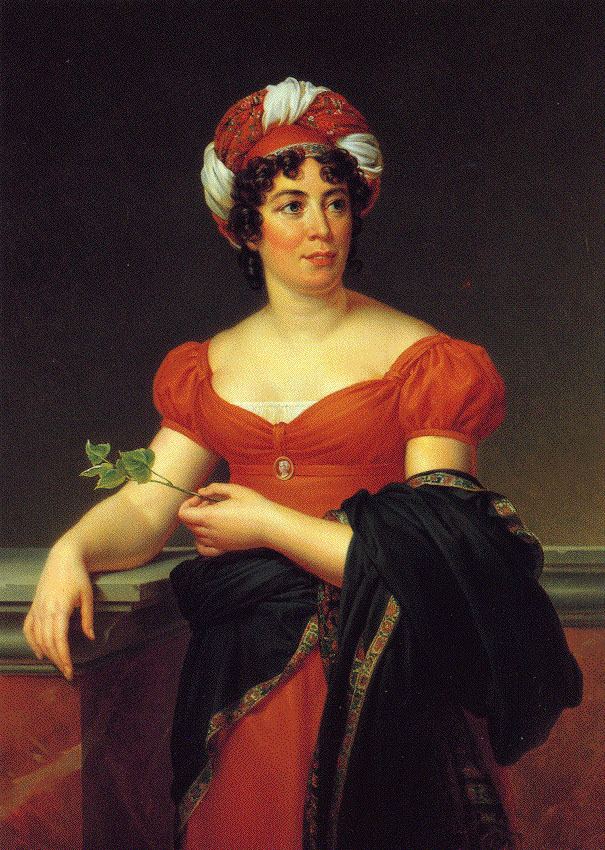 | ||
Died July 14, 1817, Paris, France Spouse Erik Magnus Stael von Holstein (m. 1786) Children Albertine, baroness Stael von Holstein Books Delphine, Corinne: Or - Italy, Considerations on the principal, Ten Years\' Exile, An extraordinary woman Similar People Benjamin Constant, Jacques Necker, Suzanne Curchod, Erik Magnus Stael von, Francois‑Rene de Chateaubriand | ||
germaine de stael benjamin constant l esprit de liberte le film
Anne Louise Germaine de Staël-Holstein ([stal]; 22 April 1766 – 14 July 1817), commonly known as Madame de Staël, was a French woman of letters of Swiss origin whose lifetime overlapped with the events of the French Revolution and the Napoleonic era. She was one of Napoleon's principal opponents. Celebrated for her conversational eloquence, she participated actively in the political and intellectual life of her times. Her works, both critical and fictional, made their mark on the history of European Romanticism.
Contents
- germaine de stael benjamin constant l esprit de liberte le film
- Germaine de Stal Wikipedia audio article
- Childhood
- Marriage
- Revolutionary activities
- Salons at Coppet and Paris
- Conflict with Napoleon
- German travels
- Eastern Europe
- Restoration
- Works
- Quotes
- References
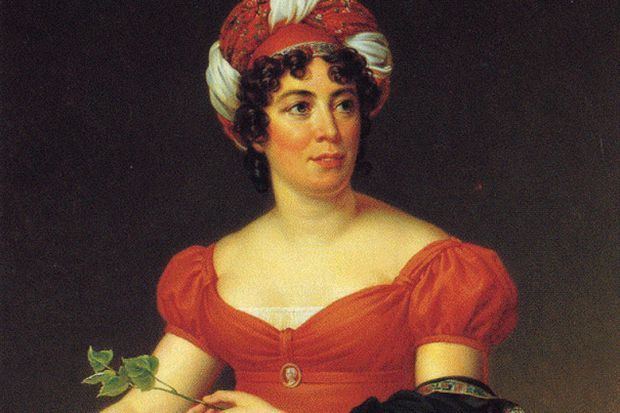
Germaine de Staël | Wikipedia audio article
Childhood
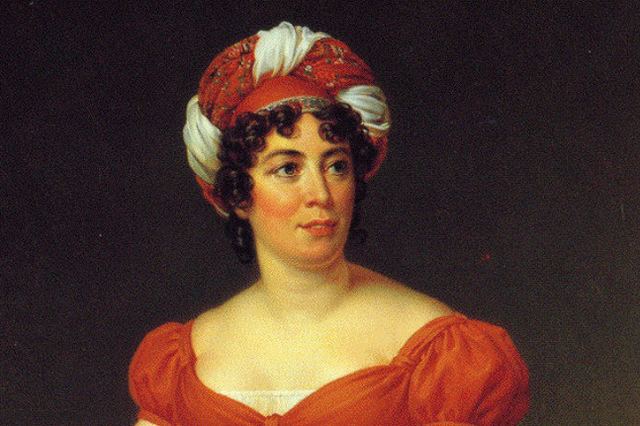
Anne Louise Germaine Necker was born in Paris, France. Her father was the prominent Swiss banker and statesman Jacques Necker, who was the Director-General of Finance under King Louis XVI of France. Her mother was Suzanne Curchod, also of Swiss birth, who hosted one of the most popular salons of Paris. Figures such as the Comte de Buffon, Jean-François Marmontel, Melchior Grimm, Edward Gibbon, the Abbé Raynal, and Jean-François de la Harpe were frequent guests. Mme Necker wanted to educate her daughter according to the principles of Jean-Jacques Rousseau and to endow her with the intellectual education and Calvinist discipline instilled in her by her own Protestant pastor father. She habitually brought Germaine as a young child to sit at her feet in her salon, where the sober intellectuals took pleasure in stimulating the brilliant child. This exposure occasioned a breakdown in adolescence, but the seeds of a literary vocation had been sown.
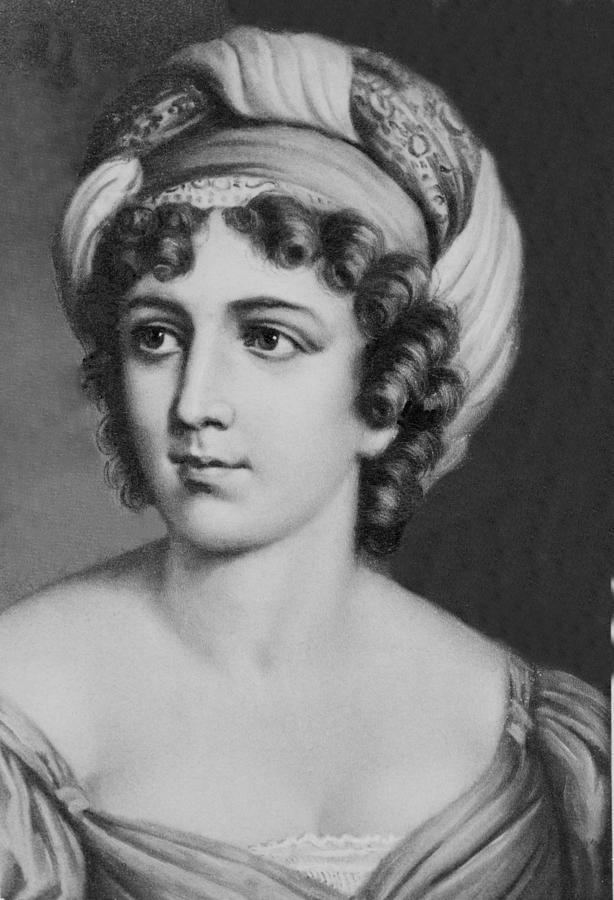
Jacques Necker was first dismissed from royal service in 1781. After this, the family eventually took up residence in 1784 in Coppet at Château Coppet, an estate her father purchased on Lake Geneva; she would later make it famous. The family returned to the Paris region in 1785, and Mlle Necker continued to write miscellaneous works, including the three-act romantic drama Sophie (1786) and the five-act tragedy, Jeanne Grey (1787). Both plays were published in 1790.
Marriage
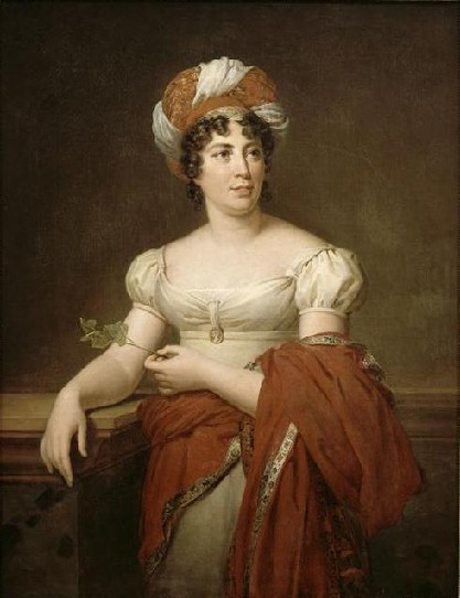
Germaine's parents became impatient for her to marry, and they are said to have objected to her marrying a Roman Catholic, which, in France, considerably limited her choice. There is a legend that William Pitt the Younger considered marrying her. The somewhat notorious lover of Julie de Lespinasse, Jacques Antoine Hippolyte, Comte de Guibert, a cold-hearted fop of some talent, certainly paid her attention.
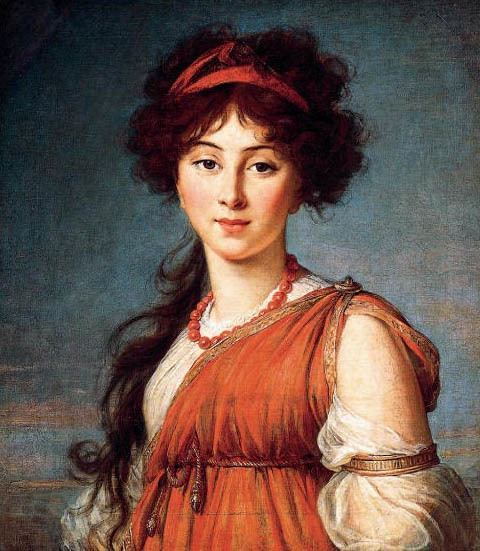
She finally married Baron Erik Magnus Staël von Holstein, who was first an attaché of the Swedish legation to France, and then minister after 1783. For a great heiress possessed of great ambition, the marriage did not seem brilliant, but Germaine had wealth and her future husband had considerable political and social standing. The marriage took place on 14 January 1786 in the chapel of the Swedish embassy Paris. A singular series of negotiations secured from the king of Sweden a promise of an ambassadorship for 12 years and a pension in case of its withdrawal.
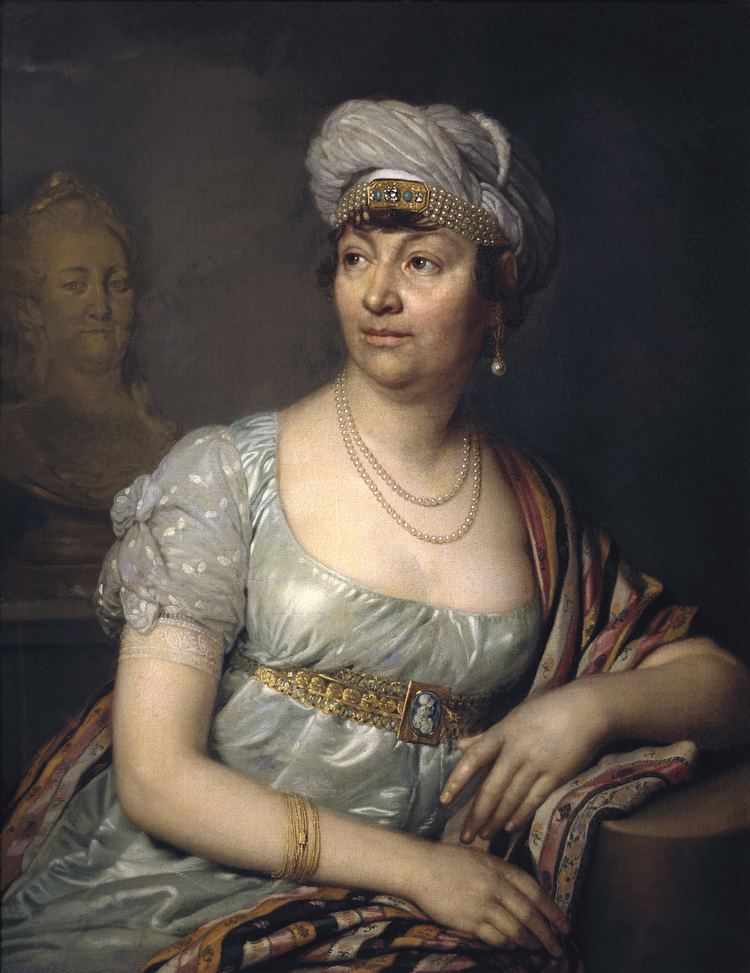
At the time of her marriage, Germaine was 20, her husband 37. On the whole, the marriage seems to have been acceptable to both parties at first, although neither had any affection for the other. The baron obtained great financial benefits, whereas his wife, with the rank of an ambassador's consort, obtained a much higher position at court and in society than she could have secured by marrying almost any Frenchman, without the inconveniences that might have been expected had she married a Frenchman superior to herself in social rank. In spite of the mutual benefits that each could claim for many years, the marriage did not last. It ended with a formal separation in 1797, although the two remained legally married until the baron's death in 1802.
Revolutionary activities
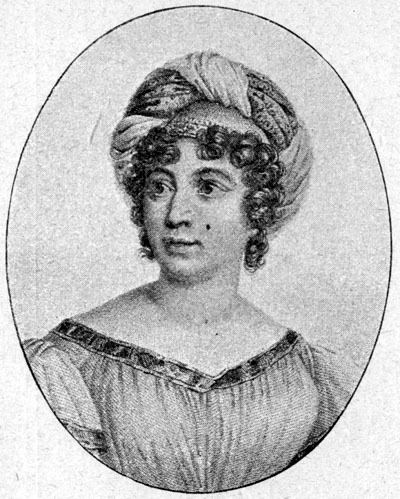
In 1788, she appeared as an author under her own name with Letters on the works and character of J.J. Rousseau. This fervid panegyric, written for a limited number of friends, demonstrated evident talent, but little in the way of critical discernment. She was at this time, and indeed generally, enthusiastic for a mixture of Rousseauism and constitutionalism in politics. Her novels were bestsellers and her literary criticism was highly influential. When she was allowed to live in Paris, she greatly encouraged any political dissident against the regime of Louis XVI. She exulted at the meeting of the Estates-General on 4 and 5 May 1789 that signaled the start of the French Revolution.
Her first child, a boy, was born in 1790 the week before her father Necker finally left France in unpopularity and disgrace after a second dismissal from royal service. The increasing disturbances caused by the Revolution made her privileges as the consort of an ambassador very important safeguards. She visited Coppet once or twice, but for the most part in the early days of the revolutionary period she was in Paris taking attending the meetings of the National Assembly and holding a salon on the Rue du Bac that was frequented by Talleyrand, the Abbé Delille, the Comte de Clermont-Tonnerre, and Gouverneur Morris.
On the day before the September massacres of 1792 she fled, befriended by Louis Pierre Manuel and Tallien. Her own account of her escape is, as usual, so florid that it provokes the question whether she was really in any danger. Directly it does not seem that she was; but she had generously strained the privileges of the embassy to protect some threatened friends, and this was a serious matter.
Salons at Coppet and Paris
After her flight from Paris, she moved to Coppet Castle and there gathered around her a considerable number of friends and fellow-refugees, the beginning of the salon that would make the place so famous at intervals during the next 25 years. In 1793, she made a long visit to England and established connections with other emigrants: Talleyrand, the Comte de Narbonne, Mathieu de Montmorency, the Marquis de Jaucourt and others. Her relations with Narbonne caused some scandal, and this sojourn to Mickleham, Surrey (some details of which are known from sources such as the letters of Fanny Burney) has never been altogether satisfactorily accounted for.
In the summer of 1793, she returned to Coppet and wrote a pamphlet on the queen's execution. The next year, her mother died at Beaulieu Castle and the fall of Maximilien Robespierre opened the way back to Paris. Her husband (whose mission had been in abeyance and was in Holland for three years) was accredited to the French republic by the regent of Sweden. She reopened her salon and for a time was conspicuous in the motley and eccentric society of the French Directory of the late 1790s. She also published several small works, the chief one her essays Sur l'influence des passions ("On the influence of passions") of 1796 and Sur la litérature considérée dans ses rapports avec les institutions sociales of 1800.
It was during these years that Mme de Staël was of chief political importance. Narbonne's place had been supplanted by Benjamin Constant, whom she first met after her second visit to Isabelle de Charriere at Lausanne in 1794, and who had a very great influence over her. Both personal and political reasons threw her into opposition to Napoleon Bonaparte. Her own preference for a moderate republic or a constitutional monarchy was quite sincere, and, even if it had not been so, her own character and Napoleon's were too much alike in some points to admit of their getting on together. For some years, she was able to alternate between Coppet and Paris without difficulty, though not without knowing that Napoleon disliked her. As mentioned above, she separated formally from her husband in 1797. In 1799, he was recalled by the king of Sweden, and in 1802 he died, duly attended by her. Besides two short-lived daughters Gustava Sofia Magdalena (born 1787) and Gustava Hedvig (born 1789) and the eldest son Ludvig August (1790–1827), they had two other children – a son Mattias Albrekt (1792–1813), and a daughter Hedvig Gustava Albertina (1797–1838), who afterwards married Victor, 3rd duc de Broglie. The paternity of these children is uncertain.
Conflict with Napoleon
The date of the beginning of what Mme de Staël's admirers call her duel with Napoleon is not easy to determine. Judging from the title of her book Dix annees d'exil ("Ten years of exile"), it should be put at 1804; judging from the time at which it became pretty clear that the first man in France and she who wished to be the first woman in France were not likely to get on together, it might be put several years earlier. Napoleon said about her, according to the Memoirs of Mme. de Remusat, that she "teaches people to think who never thought before, or who had forgotten how to think."
It displeased Napoleon that Madame de Staël should show herself recalcitrant to his influence. But it probably pleased Mme de Staël to quite an equal degree that Napoleon should apparently put forth his power to crush her and fail. Both personages had a curious touch of theatricality. If Mme de Staël had really desired to take up her struggle against Napoleon seriously, she need only have established herself in England at the peace of Amiens, but she lingered on at Coppet. There, she was shadowed by Napoleon's spies due to her tendency to defy Napoleon's orders, firstly that she keep away from Paris, and later out of France altogether, leaving her restless and lonely in rural Switzerland and constantly yearning after her beloved Paris.
In 1802, she published the first of her noteworthy books, the novel Delphine, in which the femme incomprise was in a manner introduced to French literature, and in which she and not a few of her intimates appeared in transparent disguise. In the autumn of 1803, she returned to Paris. Had she not made her anxiety about exile so public, it remains unclear whether Napoleon would have exiled her; but, as she began at once appealing to all sorts of persons to protect her, he seems to have thought it better that she should not be protected. She was directed not to reside within 40 leagues of Paris, and after considerable delay she determined to go to Germany.
German travels
She journeyed, in company with Constant, by Metz and Frankfurt to Weimar, and arrived there in December. There she stayed during the very long winter and then went to Berlin, where she made the acquaintance of August Schlegel, who afterwards became one of her intimates at Coppet. Thence she travelled to Vienna, where, in April, the news of her father's dangerous illness and shortly of his death (8 April) reached her.
She returned to Coppet, and found herself its wealthy and independent mistress, but her sorrow for her father was deep and certainly sincere. She spent the summer at the chateau with a brilliant company; in the autumn she journeyed to Italy accompanied by Schlegel and Sismondi, and there gathered the materials of her most famous work, Corinne, whose main protagonist was inspired by the Italian poet Diodata Saluzzo Roero.
She returned in the summer of 1805, and spent nearly a year in writing Corinne; in 1806 she broke the decree of exile and lived for a time undisturbed near Paris. In 1807 Corinne, the first aesthetic romance not written in German, appeared. It is in fact, what it was described as being at the time of its appearance, a picaresque tour couched in the form of a novel. The famous quote, "Tout comprendre rend très-indulgent", commonly translated as "To know all is to forgive all", is found in Corinne, Book 18, chapter 5.
The publication was taken as a reminder of her existence, and the police of the empire sent her back to Coppet. She stayed there as usual for the summer, and then set out once more for Germany, visiting Mainz, Frankfurt, Berlin and Vienna. She was again at Coppet in the summer of 1808 (in which year Constant broke with her, subsequently marrying Charlotte von Hardenberg, niece of Karl August von Hardenberg) and set to work at her book, De l'Allemagne. It took her nearly the whole of the next two years, during which she did not travel much or far from her own house.
She had bought property in America and thought of moving there, but she was determined to publish De l'Allemagne in Paris. Straining under French censorship, she wrote to the emperor a provoking and perhaps undignified letter. Napoleon's reply to her letter was the condemnation of the whole edition of her book (ten thousand copies) as not French, and her own exile from the country.
She retired once more to Coppet, where she was not at first interfered with, and she found consolation in a young officer of Swiss origin named Albert de Rocca, twenty-three years her junior, whom she married privately in 1811. The intimacy of their relations could escape no one at Coppet, but the fact of the marriage (which seems to have been happy enough) was not certainly known till after her death. They had one son, Louis-Alphonse de Rocca (1812–1842), who would marry Marie-Louise-Antoinette de Rambuteau, daughter of Claude-Philibert Barthelot de Rambuteau.
Eastern Europe
The operations of the imperial police in regard to Mme de Staël are rather obscure. She was at first left undisturbed, but by degrees the chateau itself became taboo, and her visitors found themselves punished heavily. Mathieu de Montmorency and Mme Récamier were exiled for the crime of seeing her; and she at last began to think of doing what she ought to have done years before and withdrawing herself entirely from Napoleon's sphere. In the complete subjection of the Continent which preceded the Russian War this was not so easy as it would have been earlier, and she remained at home during the winter of 1811, writing and planning. On 23 May she left Coppet almost secretly, and journeyed through Bern, Innsbruck and Salzburg on her way to Vienna. There she obtained an Austrian passport to the frontier, and after some fears and trouble, receiving a Russian passport in Galicia, she at last escaped from Napoleon's omnipotent eyes and far reach.
She journeyed slowly through Russia and Finland to Sweden, making a stay at Saint Petersburg, spent the winter in Stockholm, and then set out for England. Here she received a brilliant reception and was lionized during the season of 1813. She published De l'Allemagne in the autumn, was saddened by the death of her second son Albert, who had entered the Swedish army and fell in a duel brought on by gambling, undertook her Considérations sur la révolution française, and when Louis XVIII had been restored returned to Paris.
Restoration
She was in Paris when news came of Napoleon's landing on the Côte d'Azur. She fled to Coppet at once, but a story is current of her having approved of Napoleon's return. There is no direct evidence of it, but the conduct of her close ally Benjamin Constant may be quoted in its support, and it is certain that she had no affection for the Bourbons. In October, after the Battle of Waterloo, she set out for Italy, not only for the sake of her own health but for that of her second husband, Rocca, who was dying of tuberculosis.
Her daughter married Duke Victor de Broglie on 20 February 1816, in Pisa, and became the wife and mother of French statesmen of distinction. The whole family returned to Coppet in June, and Lord Byron now frequently visited Mme. de Staël there. Despite her increasing ill-health she returned to Paris for the winter of 1816–17, and her salon was much frequented. A warm friendship sprang up between Mme. de Staël and the Duke of Wellington, whom she had first met in 1814, and she used her influence with him to have the size of the Army of Occupation greatly reduced. But she had already become confined to her room if not to her bed. She died on 14 July, and Rocca survived her by little more than six months. Her deathbed conversion to Roman Catholicism surprised many, including Wellington, who remarked that while he knew that she was greatly afraid of death, he had thought her incapable of believing in the afterlife.
Auguste Comte included Madame de Staël in his Calendar of Great Men. In a book with the same name, Comte's disciple Frederic Harrison wrote about Staël and her works: "In Delphine a woman, for the first time since the Revolution, reopened the romance of the heart which was in vogue in the century preceding. Comte would daily recite the sentence from Delphine, 'There is nothing real in the world but love.' [Pos. Pol. iv. 44). Our thoughts and our acts, he said, can only give us happiness through results: and results are not often in our own control. Feeling is entirely within our power; and it gives us a direct source of happiness, which nothing outside can take away." Her works, Harrison wrote, "precede the works of Scott, Byron, Shelley, and partly of Chateaubriand, their historical importance is great in the development of modern Romanticism, of the romance of the heart, the delight in nature, and in the art, antiquities, and history of Europe."
Works
Quotes
The voice of conscience is so delicate that it is easy to stifle it; but it is also so clear that it is impossible to mistake it
Love is the emblem of eternity; it confounds all notion of time; effaces all memory of a beginning - all fear of an end
The desire of the man is for the woman - but the desire of the woman is for the desire of the man
